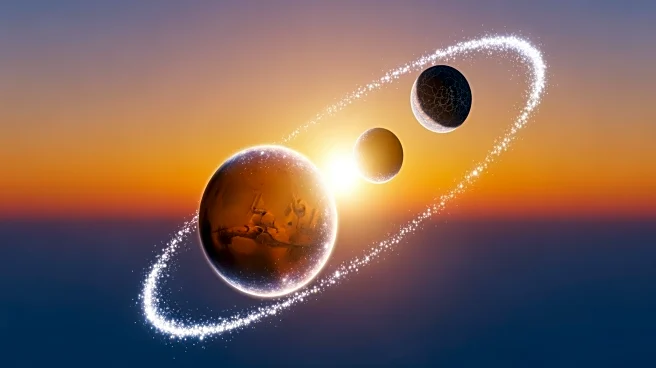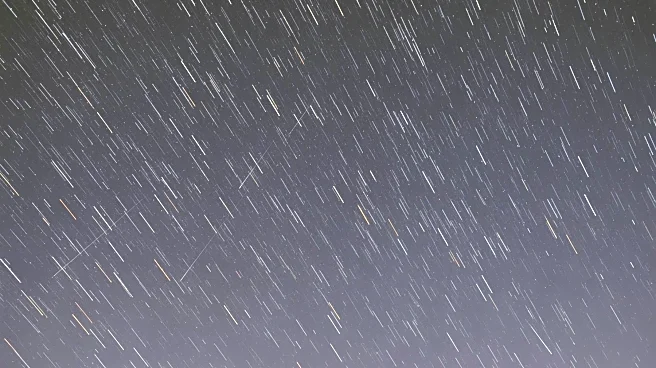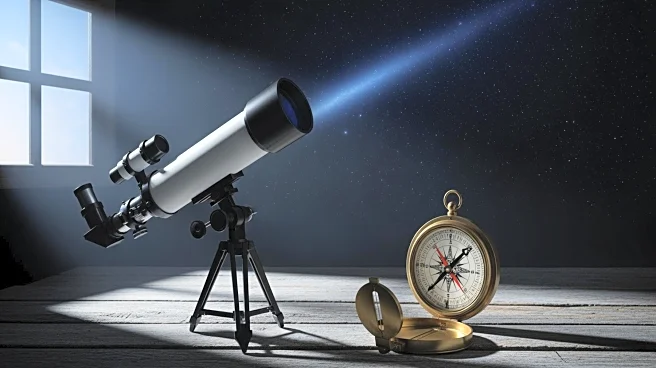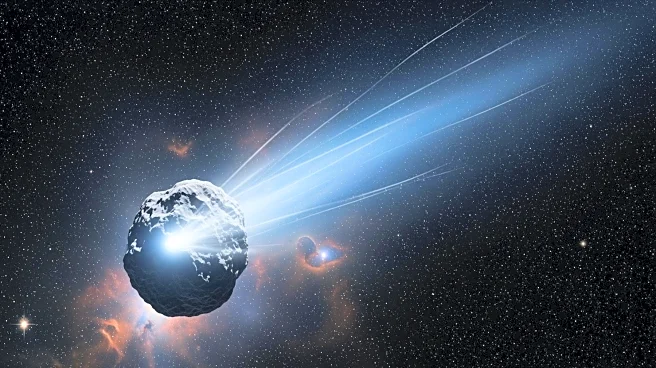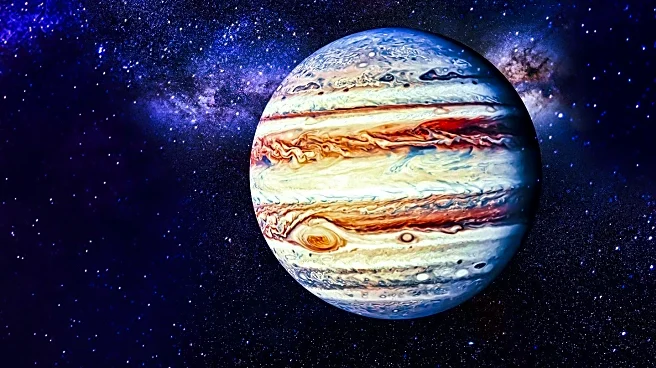What's Happening?
On November 12, 2025, stargazers will have the opportunity to witness a rare celestial event as Mercury and Mars appear close together in the evening sky. Mercury will be positioned approximately 5 degrees
above the southwestern horizon at sunset, with Mars shining about 1 degree to its upper right. This alignment is part of a retrograde motion, where Mercury appears to move east to west in the sky due to its orbital path relative to Earth. Both planets will be visible for a short period after sunset, requiring observers to have a clear view of the southwestern horizon. The event is part of a larger celestial dance that has been occurring over the past month, with Mercury tracking a path beneath Mars before retracing its steps.
Why It's Important?
This celestial event is significant for astronomy enthusiasts and provides a unique opportunity for observation and photography. The visibility of Mercury and Mars in close proximity offers a chance to study planetary motion and retrograde effects. Such events can enhance public interest in astronomy and encourage educational activities related to planetary science. Observing these planets can also provide insights into their respective solar conjunctions, with Mercury reaching its closest point to the sun on November 20, and Mars in January 2026. The event underscores the dynamic nature of planetary movements and their impact on skywatching activities.
What's Next?
Following this event, Mercury will continue its westward journey in the night sky, moving further away from Mars. Observers can expect both planets to appear progressively lower on the horizon at sunset in the coming months. As Mercury approaches its solar conjunction, it will become increasingly difficult to spot, while Mars will continue its apparent prograde motion. Stargazers are advised to use tools like the TimeandDate website to track sunset times and plan their observations accordingly. The event may also inspire further interest in upcoming celestial phenomena and encourage participation in astronomy-related activities.
